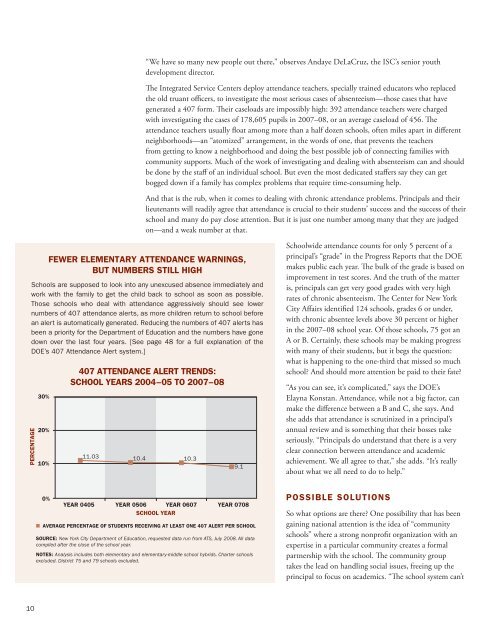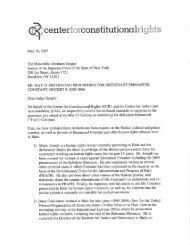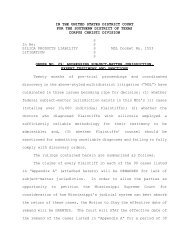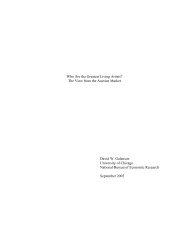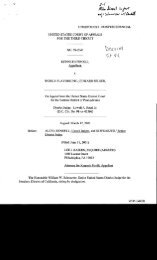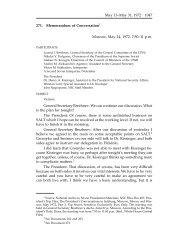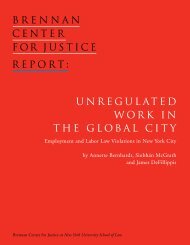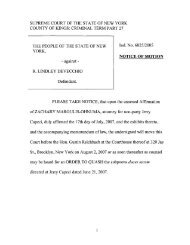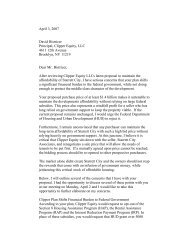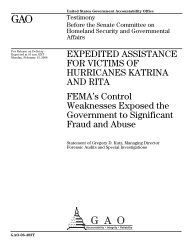Strengthening Schools by Strengthening Families
Strengthening Schools by Strengthening Families
Strengthening Schools by Strengthening Families
Create successful ePaper yourself
Turn your PDF publications into a flip-book with our unique Google optimized e-Paper software.
10<br />
“We have so many new people out there,” observes Andaye DeLaCruz, the ISC’s senior youth<br />
development director.<br />
The Integrated Service Centers deploy attendance teachers, specially trained educators who replaced<br />
the old truant officers, to investigate the most serious cases of absenteeism—those cases that have<br />
generated a 407 form. Their caseloads are impossibly high: 392 attendance teachers were charged<br />
with investigating the cases of 178,605 pupils in 2007–08, or an average caseload of 456. The<br />
attendance teachers usually float among more than a half dozen schools, often miles apart in different<br />
neighborhoods—an “atomized” arrangement, in the words of one, that prevents the teachers<br />
from getting to know a neighborhood and doing the best possible job of connecting families with<br />
community supports. Much of the work of investigating and dealing with absenteeism can and should<br />
be done <strong>by</strong> the staff of an individual school. But even the most dedicated staffers say they can get<br />
bogged down if a family has complex problems that require time-consuming help.<br />
And that is the rub, when it comes to dealing with chronic attendance problems. Principals and their<br />
lieutenants will readily agree that attendance is crucial to their students’ success and the success of their<br />
school and many do pay close attention. But it is just one number among many that they are judged<br />
on—and a weak number at that.<br />
<strong>Schools</strong> are supposed to look into any unexcused absence immediately and<br />
work with the family to get the child back to school as soon as possible.<br />
Those schools who deal with attendance aggressively should see lower<br />
numbers of 407 attendance alerts, as more children return to school before<br />
an alert is automatically generated. Reducing the numbers of 407 alerts has<br />
been a priority for the Department of Education and the numbers have gone<br />
down over the last four years. [See page 48 for a full explanation of the<br />
DOE’s 407 Attendance Alert system.]<br />
PERCENTAGE<br />
30%<br />
20%<br />
10%<br />
0%<br />
FEWER ELEMENTARY ATTENDANCE WARNINGS,<br />
BUT NUMBERS STILL HIGH<br />
407 ATTENDANCE ALERT TRENDS:<br />
SCHOOL YEARS 2004–05 TO 2007–08<br />
11.03 10.4 10.3<br />
YEAR 0405 YEAR 0506 YEAR 0607 YEAR 0708<br />
SCHOOL YEAR<br />
AVERAGE PERCENTAGE OF STUDENTS RECEIVING AT LEAST ONE 407 ALERT PER SCHOOL<br />
SOURCE: New York City Department of Education, requested data run from ATS, July 2008. All data<br />
compiled after the close of the school year.<br />
NOTES: Analysis includes both elementary and elementary-middle school hybrids. Charter schools<br />
excluded. District 75 and 79 schools excluded.<br />
9.1<br />
Schoolwide attendance counts for only 5 percent of a<br />
principal’s “grade” in the Progress Reports that the DOE<br />
makes public each year. The bulk of the grade is based on<br />
improvement in test scores. And the truth of the matter<br />
is, principals can get very good grades with very high<br />
rates of chronic absenteeism. The Center for New York<br />
City Affairs identified 124 schools, grades 6 or under,<br />
with chronic absentee levels above 30 percent or higher<br />
in the 2007–08 school year. Of those schools, 75 got an<br />
A or B. Certainly, these schools may be making progress<br />
with many of their students, but it begs the question:<br />
what is happening to the one-third that missed so much<br />
school? And should more attention be paid to their fate?<br />
“As you can see, it’s complicated,” says the DOE’s<br />
Elayna Konstan. Attendance, while not a big factor, can<br />
make the difference between a B and C, she says. And<br />
she adds that attendance is scrutinized in a principal’s<br />
annual review and is something that their bosses take<br />
seriously. “Principals do understand that there is a very<br />
clear connection between attendance and academic<br />
achievement. We all agree to that,” she adds. “It’s really<br />
about what we all need to do to help.”<br />
PossIble solutIons<br />
So what options are there? One possibility that has been<br />
gaining national attention is the idea of “community<br />
schools” where a strong nonprofit organization with an<br />
expertise in a particular community creates a formal<br />
partnership with the school. The community group<br />
takes the lead on handling social issues, freeing up the<br />
principal to focus on academics. “The school system can’t


